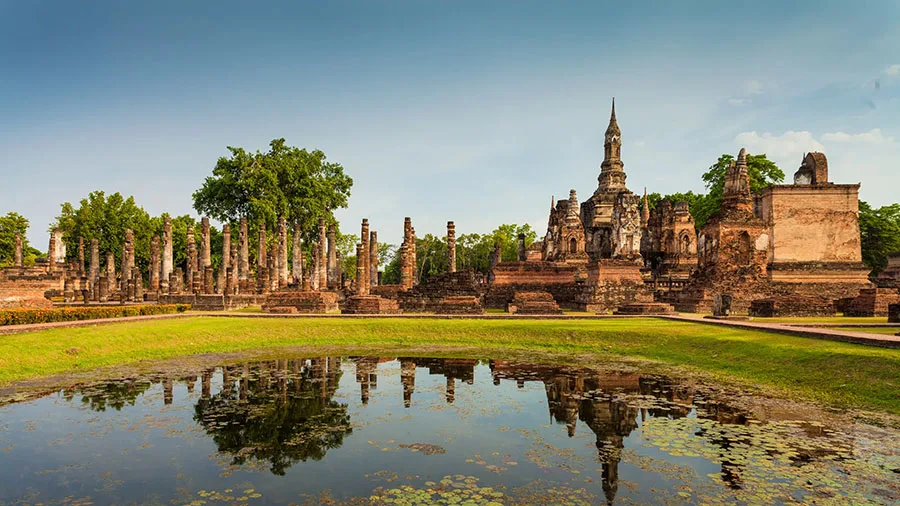Wat Mahathat in Ayutthaya is one of Thailand’s most famous and mysterious ancient temples. Best known for the Buddha head entwined in tree roots, this centuries-old ruin is a must-visit for history buffs, photographers, and travelers who love a touch of mystery in their adventures. Built in the 14th century, it once stood as the spiritual heart of the Ayutthaya Kingdom. Today, it remains a fascinating site where nature and history intertwine in breathtaking harmony.
A Glimpse Into the Past: The Rise of Wat Mahathat
In 1374, King Borommarachathirat I envisioned a grand temple that would serve as the religious epicenter of Ayutthaya. The name “Wat Mahathat” translates to “Temple of the Great Relic,” and it was built to house sacred Buddhist relics, making it one of the most significant religious sites of its time. Standing proudly in the city center near the Grand Palace, it played a crucial role in royal ceremonies and religious teachings.
Wat Mahathat wasn’t just a temple—it was the spiritual powerhouse of Ayutthaya. Here, monks gathered for prayers, kings sought divine guidance, and locals came to worship. The temple’s towering prang (Khmer-style spire) was once the tallest in the city, a landmark visible from miles away. However, centuries of war and natural decay have left it in ruins, adding to its haunting beauty.
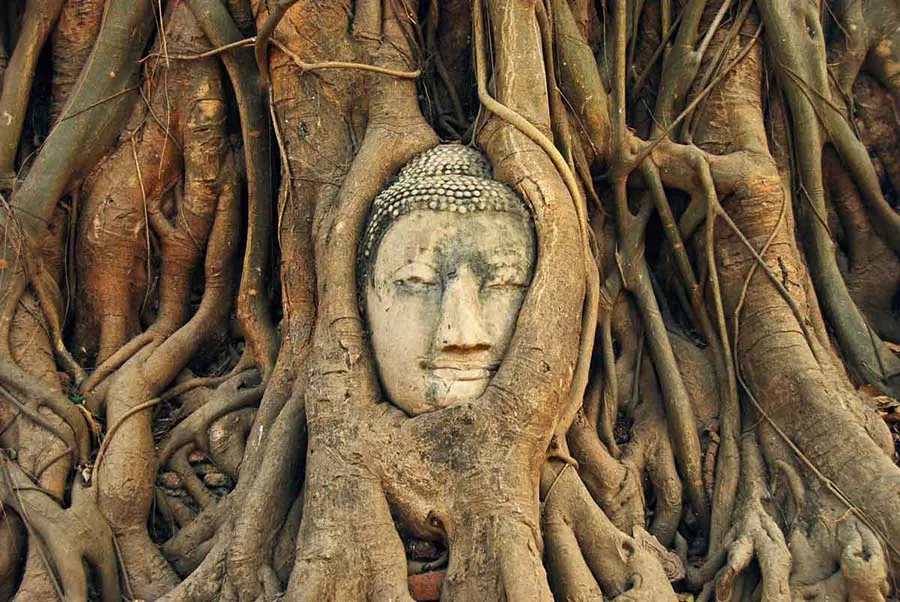
The Iconic Buddha Head in the Tree: An Unsolved Mystery
One of the most famous sights in Ayutthaya is the stone Buddha head ensnared by tree roots at Wat Mahathat. But how did it get there?
Historians believe that when the Burmese invaded and ransacked Ayutthaya in 1767, they decapitated many Buddha statues in the temple. Over time, this particular head became entangled in the growing roots of a Bodhi tree, creating an awe-inspiring and almost mystical image. Today, it’s one of the most photographed spots in Thailand—just remember to kneel if you take a picture, as it’s respectful to keep your head lower than Buddha’s.
Why Wat Mahathat Matters: A Site of Power and Devotion
Wat Mahathat was more than a place of worship—it was a symbol of power. The Supreme Patriarch of the Thai Buddhist order resided here, overseeing religious teachings and guiding monks in their spiritual journey. Its central location next to the Grand Palace signified its importance in both religious and political spheres. Even in ruins, the temple holds a strong spiritual presence that continues to draw visitors from all over the world.
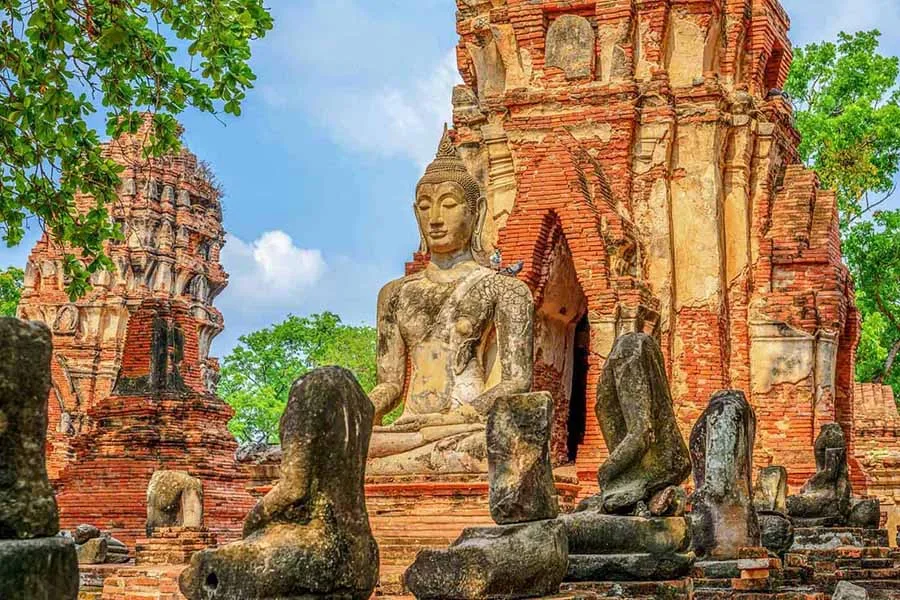
What to Expect When Visiting Wat Mahathat Today
Wat Mahathat is now part of the Ayutthaya Historical Park, a UNESCO World Heritage Site. If you plan to visit, here’s what you need to know:
- Location: Ayutthaya Historical Park, Thailand
- Entry Fee: 50 Baht (around $1.50 USD)
- Opening Hours: 8:00 AM – 5:00 PM daily
- Best Time to Visit: Early morning or late afternoon for cooler temperatures and fewer crowds
- Must-See Spots: The iconic Buddha head, the towering prangs, and the serene Buddha statues scattered throughout the ruins
Fun and Lesser-Known Facts About Wat Mahathat
- The temple’s original central prang collapsed in the early 20th century, leaving behind its current fragmented form.
- The Buddha head in the tree is NOT the only one! Other decapitated Buddha statues can be found throughout the temple grounds.
- Ayutthaya was once the second-largest city in the world in the 1700s, with a population of over 1 million people—bigger than London at the time!
- Many believe the roots embracing the Buddha head symbolize the resilience of Buddhism and the fusion of nature and spirituality.
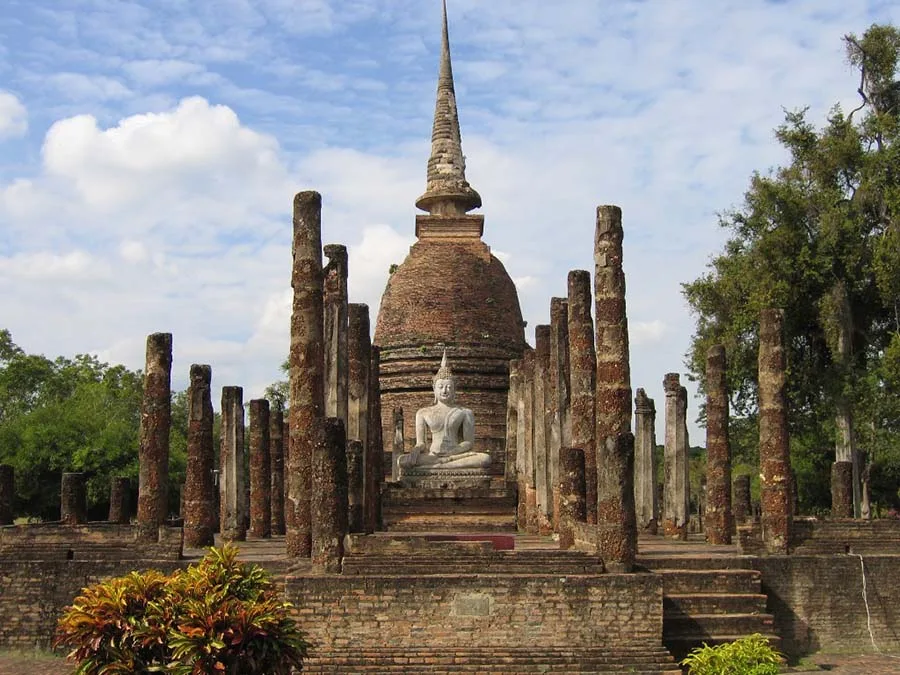
Frequently Asked Questions
What makes Wat Mahathat special?
Wat Mahathat is famous for its intertwining of history and nature, with the Buddha head in the tree serving as an iconic image of Thailand’s past. It was also the center of Buddhist spiritual power in the Ayutthaya Kingdom.
When was Wat Mahathat built?
The temple was constructed in 1374 under King Borommarachathirat I as a sacred site for housing Buddha relics.
Why was Wat Mahathat destroyed?
In 1767, Burmese forces attacked Ayutthaya and left the temple in ruins, looting its treasures and decapitating its Buddha statues.
How much is the entry fee?
Visitors pay a modest fee of 50 Baht (around $1.50 USD) to explore the ruins.
Can I take pictures of the Buddha head in the tree?
Yes, but out of respect, visitors should kneel when taking photos, keeping their heads lower than Buddha’s.
What is the best time to visit Wat Mahathat?
Early mornings and late afternoons offer cooler temperatures, softer lighting for photos, and fewer crowds.
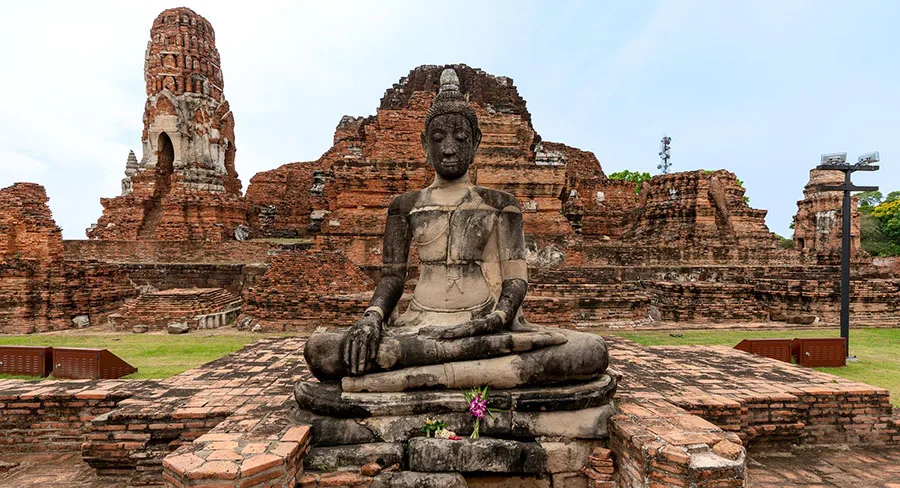
Ready to Explore the Magic of Wat Mahathat?
If you love history, mystery, and breathtaking ruins, Wat Mahathat should be on your travel bucket list. Whether you’re drawn to the eerie beauty of the Buddha head in the tree or the grandeur of ancient Khmer architecture, this temple offers an unforgettable journey into Thailand’s past.
So, grab your camera, put on some comfortable walking shoes, and get ready to step back in time to one of Thailand’s most fascinating historical landmarks!
